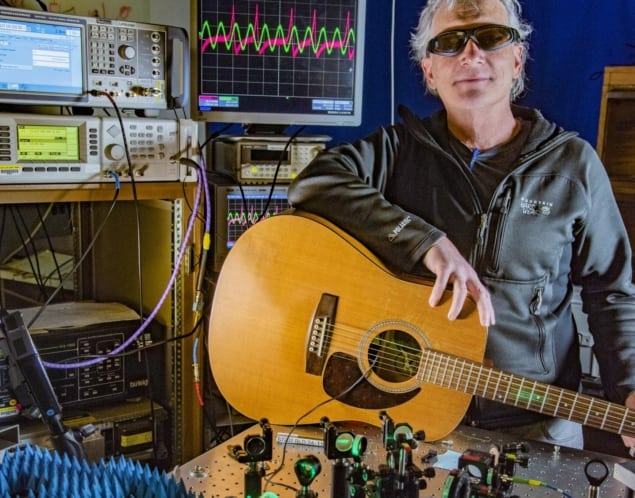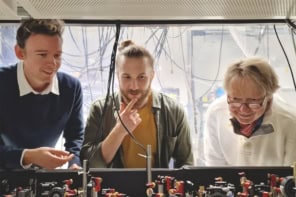
An “atomic recording studio” has been used by physicists in the US to record music using atoms in a vapour. The system was used to simultaneously record sound from two guitars and also to capture and reproduce the iconic sound of the rock band Queen.
The studio was created by Chris Holloway and colleagues at the National Institute for Standards and Technology (NIST) in Boulder, Colorado. The team used concepts of Rydberg physics to store audio information on two species of atoms within the same vapour. Their research could lead to improvements in secure quantum communications, particularly in deep space where very weak signals must be used.
Rydberg physics is a burgeoning field that focuses on the properties of Rydberg atoms, which have one or more electrons that are excited to very high energy levels. Since these excited electrons are relatively far away from their host nuclei, Rydberg atoms have huge dipole moments. This means that the atoms interact strongly with the radio and microwave signals that are used in telecommunications.
Quantum-scale receiver
A Rydberg radio uses a vapour of Rydberg atoms contained within a small chamber to receive, store and output radio and microwave signals. These devices have been demonstrated in several recent studies and are examples of practical quantum-scale receivers.
The NIST researchers pushed the capabilities of Rydberg radio further than ever before in their study. They created an “atomic recording studio” that stored Holloway’s own improvised guitar solos inside a Rydberg vapour cell in real time. They were able to do multitrack recording of two guitars using a vapour that contained two different types of Rydberg atom. One guitar track being recorded by caesium and the other by rubidium.

Radio uses Rydberg atoms to play ‘Mary had a little lamb’
Finally, they used the same setup to record Queen’s track “Under Pressure”. While one atom species handled the instrumental part of the track, the other recorded the vocals and managed to cope with Freddie Mercury’s extensive vocal range. Holloway’s team acknowledges that limitations in sound quality mean that Rydberg radio won’t be replacing digital recording devices any time soon, but still hope to produce an “atomic record” in their studio; potentially inspiring a new generation of quantum researchers.
Their setup also shows promise for improving secure quantum communications, particularly by detecting the very weak signals characteristic of transmissions used in deep space communications. Holloway and colleagues now aim to determine just how weak these signals can be before they become undetectable to Rydberg atoms, and determine the maximum speed at which data can be transmitted.
The recording studio is described in AIP Advances.



